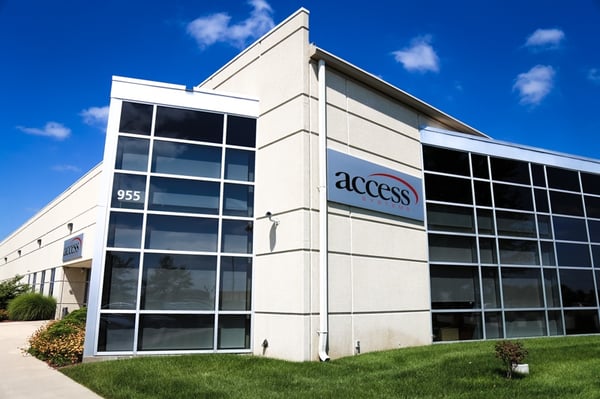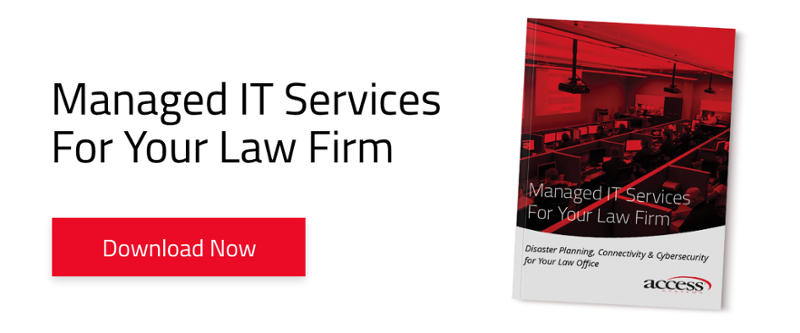With severe storms impacting more urban and rural areas last year, businesses should evaluate what to do when a natural disaster hits. You may already have a business continuity plan in place, but does it truly meet your needs?
Where Will You Go to Achieve Business Continuity?
In any disaster, critical resources are needed both for personal and business survival. Where are you going to get these resources? Location is often an overlooked resource in business continuity plans. Whether your building is directly impacted, or the disaster has affected the surrounding area, preventing you from working there; a secondary location is crucial. If you are based out of an office park or other multi-tenant building, you may be competing for this valuable resource. Not many commercial, real estate professionals can get you 2,000 square feet on short notice to achieve immediate business continuity, especially if others are seeking the same thing.
During our Network Assessment, customers frequently have answers for where they’d work during a disaster, such as “we can work in the owner’s basement” or “my apps are all in the cloud.” What does your disaster recovery and business continuity plan say?
If your business is client-focused, is inviting a client to the owner’s home appropriate? Additionally, the home may not have adequate space or Internet to support all of your employees. Does your staff need face-to-face collaboration or will they work remotely?
Cloud applications provide flexibility to access them from anywhere, but does the location have strong Internet and security?
Many businesses have established relationships with other businesses. If a business has similar staff size and office space, you can come to a mutual agreement to use each other’s facilities during the recovery phase. Two key components need to be considered for this business continuity solution.
First, is the other business far enough away? A fire to your building may not impact someone across the road, but a tornado certainly may. Flooding is often a secondary disaster that is not apparent immediately. If you experienced a large storm, will your secondary location have flooding issues in the next few days?
Second, does the other business have a similar workflow? A dental office loaning space to a paint shop would not be a suitable solution. They have different space and equipment needs. If you have warehouse or manufacturing needs, find a partner that also has them. Not all disasters are total losses, a storm may damage a building, but equipment can be moved to a new location for use. Same goes for inventory and raw materials.
If you do not have a backup location of your own, establish an agreement with a business partner. Chances are they will have never considered this idea before and may jump at the chance to make their own business resilient to disaster.
When using another business’ office, you may be challenged with adequate space for your employees. It is important to identify critical people to continue working. Who needs to be in the office to keep working? It may be possible to keep the full staff employed during a disaster recovery event but always plan for the worst case scenario. Consider client facing or manual labor tasks as your priority. Back office staff could work remote if possible.

How Critical Is Your Technology to Business Continuity?
During our Network Assessment, a qualified engineer, like myself, will delve into what your needs are and understand the priorities you may have.
First, your leaders should understand your Recovery Time Objectives (RTO) for individual applications or services to make business continuity decisions. RTO is the targeted duration of time and a service level, within which a business process must be restored after a disaster (or disruption) in order to avoid unacceptable consequences associated with a break in business continuity. These consequences may be financial or reputational in nature. Essentially it answers the question: “how long can X be unavailable before I start to lose money and/or customers?”
These values can vary depending on your business. If you are a business serving a critical need, such as a hospital or a business that has services that generate revenue, your RTOs are likely measured in minutes. Most others are measured in hours.
It’s important to work through each of these to find your most critical services. This will also help drive your order of priority when you must restore. In some disaster recovery scenarios, not every service can be restored at the same time.
How Should You Recover for Business Continuity?
Access Systems always recommends both on-site and off-site backup and disaster recovery options. Typically, your on-site option handles those “oops” moments, like accidental deletion and virus attack.
The off-site backup covers you against the “UH OH” situations, when a natural disaster or large cyber attack occurs. With Access Systems, most off-site backup solutions require a technician to either download or obtain a copy of the data. To meet faster RTOs, we do have the ability to “spin up” servers in the cloud and make them accessible from your office, even if it is a temporary location.
Are you looking to build a disaster recovery plan, or do you want assistance in creating a business continuity plan? Call us today at 888-464-8770!
.png?quality=high&width=3192&height=1279&name=Copy%20of%20Untitled%20(63).png)



